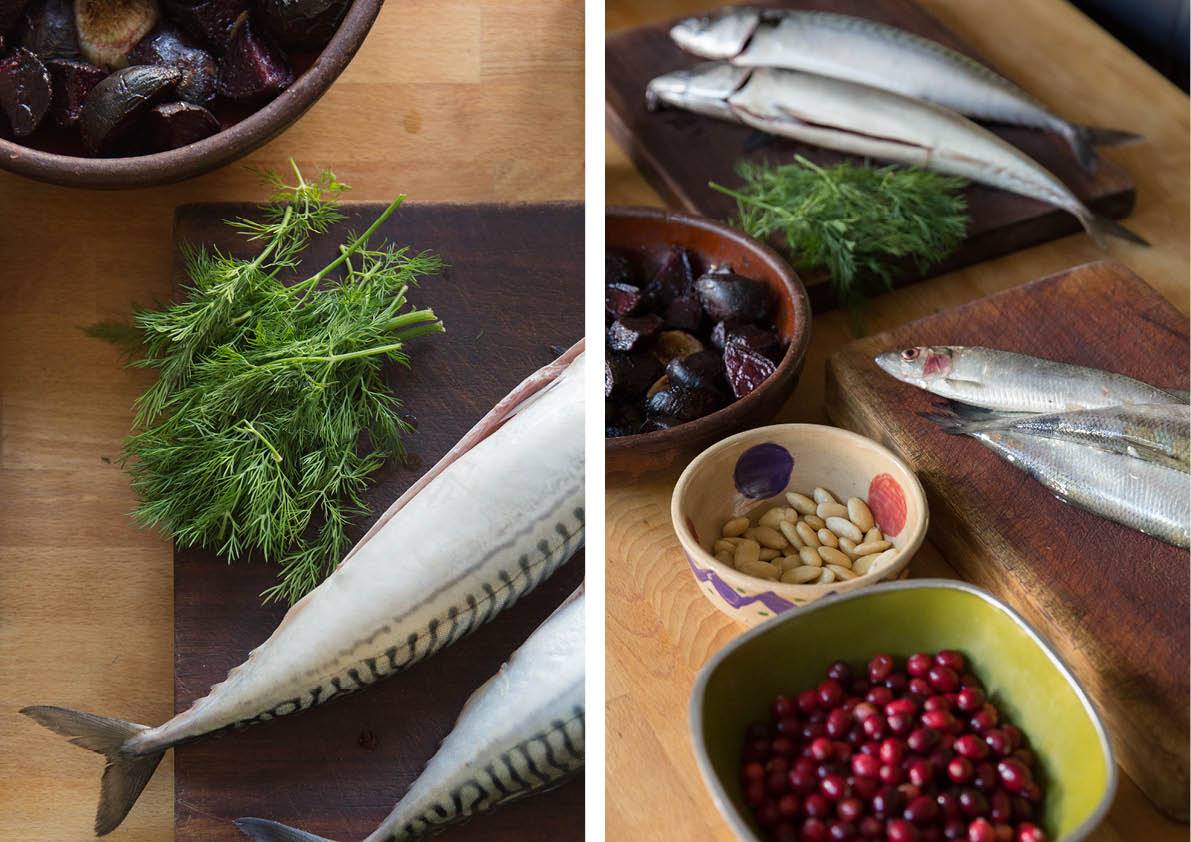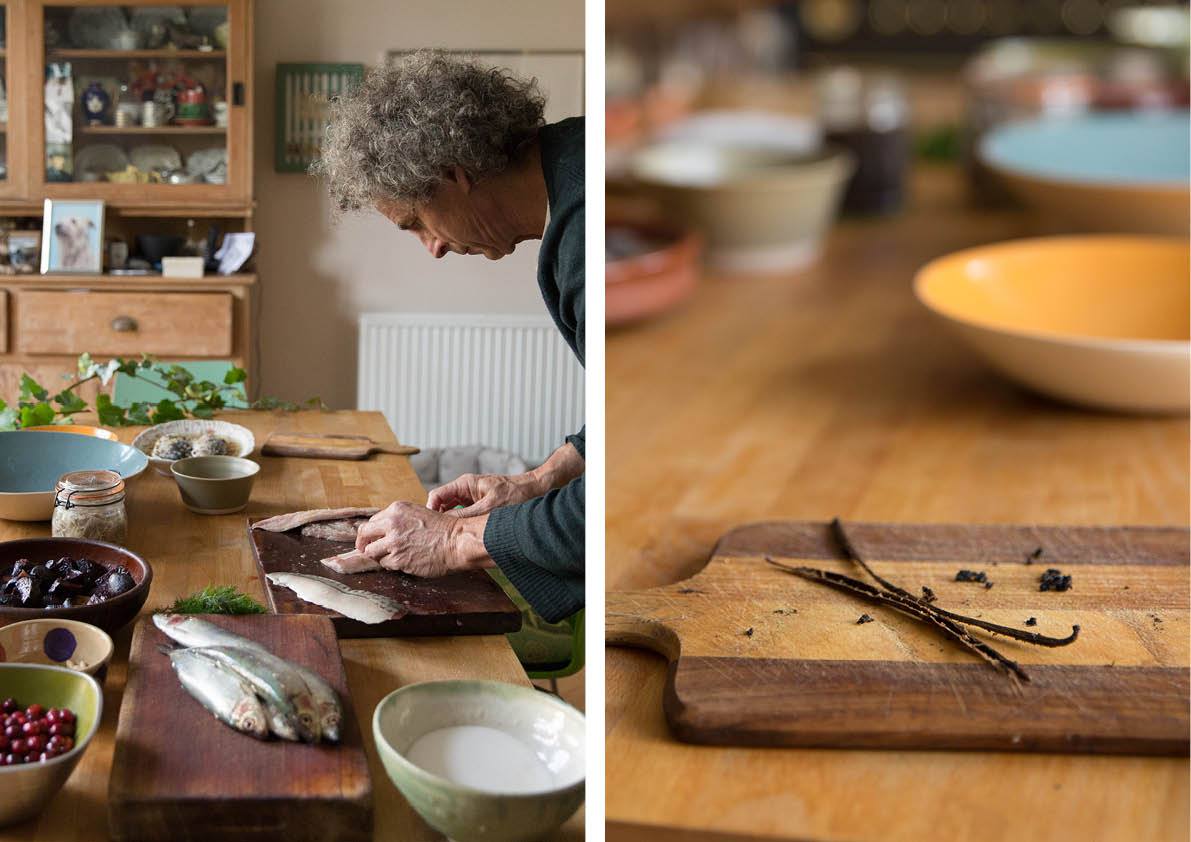
For the night before Christmas, Orlando Gough prepares a delicious Danish feast...
When it comes to death and cooking, the Danes know what's what. The country that gave us The Killing and The Bridge, upping the ante on gruesome murders and dysfunctional detectives, the country that pretty much invented bacon, that gave us the Danish pastry and the cinnamon bun, that gave us Babette's Feast, that gave us, well gave themselves Noma, demands to be taken seriously. (Our neighbours Jo and Emlyn were given as a wedding anniversary present a trip to Noma the full experience, the tasting menu, twenty-odd courses of sublimely subtle cooking. They loved it. On the way back Emlyn had fish and chips on the boat.)
Our friends Anne and Liz, sisters, excellent cooks, clever, charming, intensely competitive with each other, have a family tradition, inherited from friends of their parents, of a Danish Christmas Eve feast. On the face of it, it's a very weird meal to eat on Christmas eve, because the food is cold. A cold meal in mid-winter in a cold country? Surely not a good idea. And yet. There is heat, as we'll discover, and the meal itself is curiously cosy, I almost wrote hygge. (What ever happened to hygge? It came and it went, like the Baha Men and spiralisers and adult colouring books.)


The elements of this feast are slow-pickled fish herring almost certainly; quick-pickled fish possibly salmon, in the form of gravad laks, though salmon is not in season, so better mackerel; smoked fish trout perhaps, eel perhaps, mackerel at a pinch.
The Danes and other Scandinavians are experts at transforming fish in strange and beautiful ways, originally to preserve them. These methods of preserving, unlike refrigeration, have provided an amazing and beautiful variety. A pickled herring tastes gloriously different from a herring, deeper, more three-dimensional; a refrigerated herring tastes like, well, like a herring.
What this feast does not include are wind-dried fish (the Norwegian lutefisk, klippfisk, stockfish) or fermented fish (the terrifying Icelandic hrkarl, fermented shark). That's partly because it's a Danish feast, and partly because I'm a coward.


The fish is followed, as one might expect, by the meat: salamis, pats and, rather cheekily in the Anne-Liz version, porchetta, which is decidedly un-Danish, but unquestionably scrumptious.
On the table at all times are sauces - horseradish sauce, mustard sauce, dill mayonnaise; vegetables (ah...at last) beetroot salad or pickled beetroot, pickled cucumber three ways, potato salad, fennel salad possibly, celeriac remoulade possibly, something green; and bread rye or pumpernickel with, of course, Danish butter. And, vitally, unconditionally, irreducibly, acquavit.
The acquavit should come straight from the freezer, and be served in frosted glasses. It should probably, given that this is a Danish event, be Aalborg. It should be downed in one. There's the heat. Beer is allowed, but it seems to me to be a cop-out.
Finally, there's risalamande, a Danish take on rice pudding.


You can buy all this stuff ready made - just go to Ikea and ignore the furniture - but that's not quite the point. Here are some useful elements (the amounts are right for about 8 people):
Pickled Herrings
Jane Grigson is very good on the pickling of herring in her wonderful Fish Book. The Danish style takes a bit of doing you need to pickle your fish (and it's a slow pickle, over a week or two), then soak it, then marinate it in a sweet and sour dressing. I happen to prefer them straight up, no marinade.
Cured Mackerel
1 tsp alspice berries
1 tsp coriander seeds
2 tsp peppercorns
150g salt
70g caster sugar
4 mackerel fillets
This is the gravad laks method applied to mackerel. It's a quick(ish) pickle three days.
First make the cure: coarsely grind the juniper berries, coriander seeds and peppercorns in a mortar; mix with the salt and sugar.
Lay a quarter of the cure out on a plate, then two of the mackerel fillets, skin side down, then half the cure, then the other two fillets, skin side up, then the rest of the cure.
Cover with cling film and leave in a cool place for three days could be the fridge, but it seems odd to use a fridge when pickling, considering it's an alternative to refrigeration.
To serve, wash the cure off the fish, and pat dry with kitchen paper, and slice in half lengthways, taking the opportunity to remove any lingering bones.


Mustard Sauce
2 tbsp Dijon mustard
2 tsp demerara sugar
1 tsp white wine vinegar
1 egg yolk
150ml vegetable oil
1 tbsp mustard seeds, crushed
Mix together the mustard, sugar, vinegar and egg yolk. Gradually add the oil, as if you were making mayonnaise. Mix in the mustard seeds.


Pickled Cucumber
There are asier (pronounced, roughly, airsher) - large cucumbers salted and then pickled for a month or so in a vinegar-sugar-spice mix. There are gherkins small ridged cucumbers treated in a similar way. Then there's a quick pickled cucumber (a few hours), more like a sweet and sour cucumber salad:
1 large cucumber
50g salt
75ml white wine vinegar
50g caster sugar
Slice the cucumber thinly, and put in a colander. Sprinkle on the salt, mix, cover with a plate, put another plate underneath to catch the drips, and leave for an hour. Rinse, squeeze dry, and put into a bowl. Mix the vinegar and sugar with a couple of tablespoonfuls of boiling water. Pour over the cucumber and leave to marinate for several hours.


Beetroot Salad with Apple and Onion
500g cooked (preferably roasted) or pickled beetroot, sliced
3 apples, preferably Cox's Orange Pippins, cored and sliced
1 medium onion, sliced
4 tbsp chopped parsley
Make a mustardy dressing (1 tbsp white wine vinegar, 4 tbsp olive oil, 2 tsp mustard, salt and pepper).
Put the beetroot, apples, onion and parsley in a bowl with the dressing and mix together lightly.

Risalamande
200g pudding rice
800g milk
60g caster sugar
A vanilla pod
60g blanched almonds
200ml double cream
Put the rice, milk, sugar, the vanilla pod into a saucepan, bring to the boil, turn the heat right down and cook at a blip for about half an hour, stirring occasionally, until the milk is absorbed.
Remove the vanilla pod. Allow to cool.


Set aside one almond; chop the others coarsely. Mix into the rice, along with the cream.
The Danes serve this with cherry compote, which is slightly odd because cherries are out of season. Cranberry compote would be good.
The person who gets the whole almond gets a prize, usually a marzipan pig. (Is that a prize?)
It's a glorious thing this feast, with an obvious inherent danger. What happens to Christmas Day?
Words by Orlando Gough. Images by Bobby Mills (taken in Orlando's lovely Brighton kitchen).

Add a comment